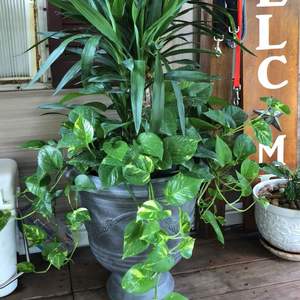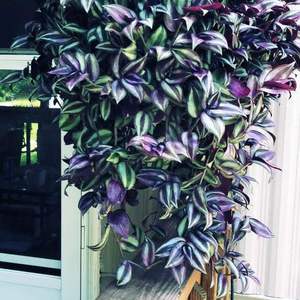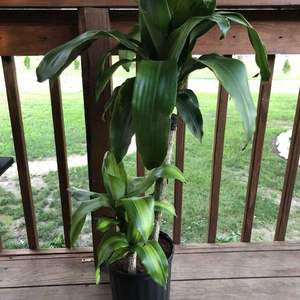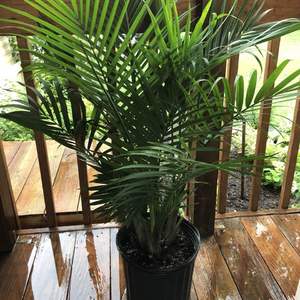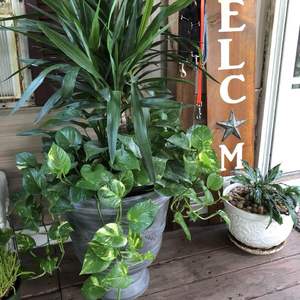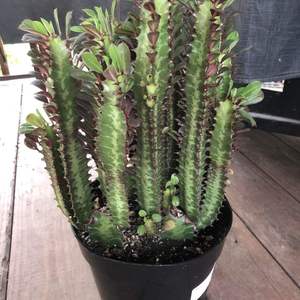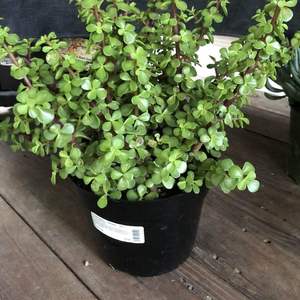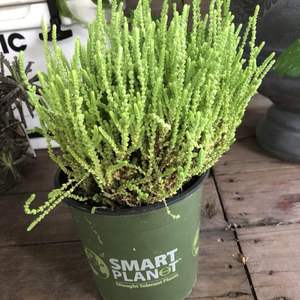Article
atastybellpepper
2022-07-17

You should really be able to grow plants even if you reside in a small flat. In addition to common houseplants, an apartment garden may support a variety of herbs, fruits, and vegetables. When you're just learning how to plant, start with a few small pots. Considerations like sunlight exposure and the overall weight of your containers must be made. Here's how to create a beautiful apartment garden.
1. Soil
Water, oxygen, and nutrients are all provided for plants by their soil. You can't use regular garden soil since it would clump in pots, restricting access to oxygen and preventing water from flowing through. This is because your apartment garden will probably incorporate containers. Consequently, a potting mix that drains effectively is required. Potting mix is airy and light, effectively moving oxygen and water to maintain healthy roots. You won't need to be concerned about bringing illnesses or bugs into your flat since it is reasonably sanitary.
2. Water
Container plants need a lot of water, often many times each day. So choose a location for your container garden that is close to a water source. Carrying watering cans can get tiresome, particularly if you need to water many containers at once. If your arrangement allows it, think about getting a hose that can be connected to a sink faucet. When you need it, it is convenient, and when you don't, it coils up.
3. Sunlight
The majority of blooming and fruiting plants need a full day of sunlight. This translates to six to eight hours of direct sunlight each day. Especially in a city where towering buildings might obstruct the sun for at least part of the day, this can be difficult to find in an apartment. The greatest chances of getting full sun are on balconies and roofs. If you're planting on a windowsill, you have two options: either choose plants that don't need as much light, like certain herbs and salad greens, or add a grow light to simulate the sun's rays.
4. Humidity
When the heat is on, you may need to add some additional humidity if you are growing your plants inside on a ledge. You may either put the plants on a tray of water or spritz them with a light mist to aid.
5. Wind
Your plant pots may need additional protection if your plants will be exposed to strong winds, particularly if they will be on a rooftop or balcony. Wind has the power to rip apart foliage and topple pots. So make a wind barrier available, such a screen or railing. Alternately, make sure your pots are large and substantial enough to secure the plants.
6. Weight
Although soil-filled containers are already heavy, their weight might increase by three times when they are saturated with water. Make sure the position of your apartment's garden can support the weight. It will be necessary to fasten window boxes to the windowsill. Additionally, find out if there are any weight limitations from your landlord or the building board if you're gardening on a balcony or rooftop.

1. Herbs: Many herbs perform well in containers, but they won't become as big and bushy as they would if they were planted in the ground outside. Additionally, if you harvest regularly, you may need to replace your plants. But having access to fresh herbs while cooking is amazing. Mint, chives, parsley, lavender, basil, thyme, and other herbs are some of the best plants for apartment gardening.
lettuce greens Favorite salad ingredients like lettuce, spinach, and arugula are shallow-rooted, quickly growing plants. If they have enough water, they aren't too picky about their growth circumstances.
2. Tomatoes: Although tomato plants may become bulky and heavy, they thrive in containers. They will thrive in a container with a minimum diameter of 14 inches, however bigger is preferable. The patio varieties may be grown in a hanging basket. Make careful you choose a determinate or dwarf tomato variety.
3. Chili peppers: If you like spice, hot pepper plants do extremely well in containers and may produce fruit all year long. Sweet peppers may also be grown in containers, although they normally don't perform as well as hot peppers.
4. Meyer lemons: Dwarf citrus trees are among the simplest fruits to cultivate in a container. If they get six to eight hours of direct sunlight each day combined with some humidity, meyer lemons thrive inside. Lemon trees emit a sticky sap, so place something beneath the pot to protect your floors and furnishings.
5. Strawberry: A window box filled with strawberries is both aesthetically pleasing and appetizing. For the greatest fruit, strawberry plants typically need at least six hours of sunlight every day and continuously damp (but not soggy) soil.
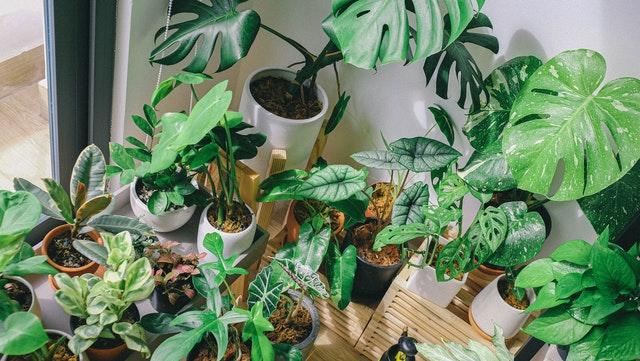
Watering is by far the most crucial gardening chore. Even if rain falls on your garden, there most likely won't be enough water. As your plant develops, the dirt in containers dries up rapidly. Use your finger to probe the dirt about an inch or so below the surface. It needs watering if it seems dry.
1. Feeding: In accordance with each plant's specific growth needs, you must feed your plants on a regular basis. The simplest technique is often to apply a water-soluble fertilizer when you water. Inspect your potting mix to see whether it contains fertilizer; if it does, you won't need to feed your plants as often.
2. Problems: No matter where you cultivate plants, pests and illnesses will eventually find them, and there are no natural predators for insects inside. Every time you water or harvest your plants, check them for issues. Move a plant away from the other plants until the issue is fixed if you see evidence of pests or illnesses, such as discoloration or holes in the leaves.
3. Harvesting: Find out when your particular plants are ready to be picked, and then don't put off enjoying the rewards of your toil. In certain circumstances, harvesting encourages the plant to grow more food that you can collect.
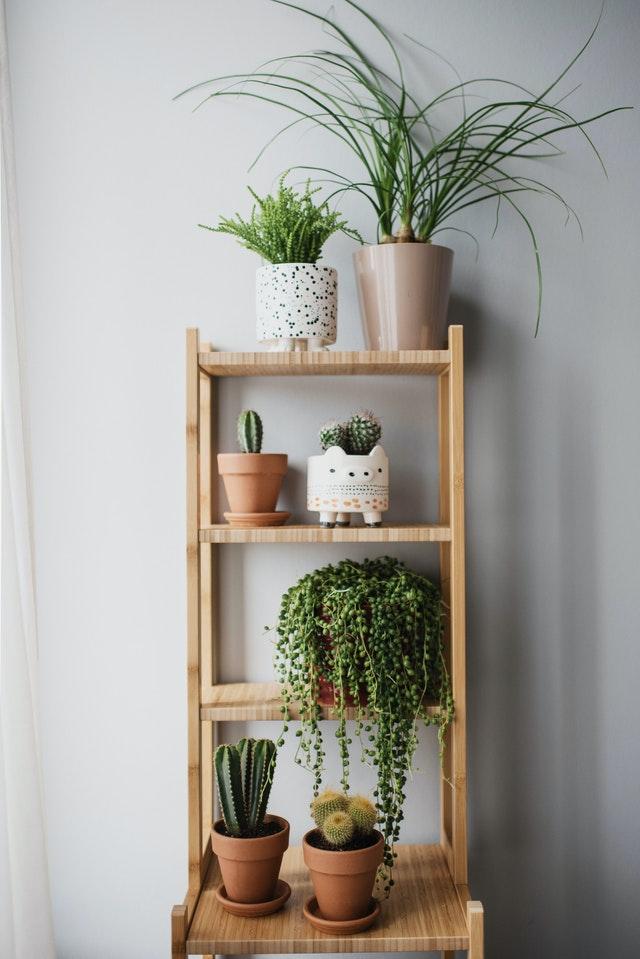
There isn't usually a ton of room available in apartments for gardening. However, there will inevitably be a sunny spot where you may exercise your green thumb and sample the results of your effort.
Apartment Plant Growing Instructions
All plants have certain growth conditions that must be fulfilled, while some are more resilient and forgiving to novice gardeners than others. When selecting plants for your apartment garden, keep the following factors in mind:1. Soil
Water, oxygen, and nutrients are all provided for plants by their soil. You can't use regular garden soil since it would clump in pots, restricting access to oxygen and preventing water from flowing through. This is because your apartment garden will probably incorporate containers. Consequently, a potting mix that drains effectively is required. Potting mix is airy and light, effectively moving oxygen and water to maintain healthy roots. You won't need to be concerned about bringing illnesses or bugs into your flat since it is reasonably sanitary.
2. Water
Container plants need a lot of water, often many times each day. So choose a location for your container garden that is close to a water source. Carrying watering cans can get tiresome, particularly if you need to water many containers at once. If your arrangement allows it, think about getting a hose that can be connected to a sink faucet. When you need it, it is convenient, and when you don't, it coils up.
3. Sunlight
The majority of blooming and fruiting plants need a full day of sunlight. This translates to six to eight hours of direct sunlight each day. Especially in a city where towering buildings might obstruct the sun for at least part of the day, this can be difficult to find in an apartment. The greatest chances of getting full sun are on balconies and roofs. If you're planting on a windowsill, you have two options: either choose plants that don't need as much light, like certain herbs and salad greens, or add a grow light to simulate the sun's rays.
4. Humidity
When the heat is on, you may need to add some additional humidity if you are growing your plants inside on a ledge. You may either put the plants on a tray of water or spritz them with a light mist to aid.
5. Wind
Your plant pots may need additional protection if your plants will be exposed to strong winds, particularly if they will be on a rooftop or balcony. Wind has the power to rip apart foliage and topple pots. So make a wind barrier available, such a screen or railing. Alternately, make sure your pots are large and substantial enough to secure the plants.
6. Weight
Although soil-filled containers are already heavy, their weight might increase by three times when they are saturated with water. Make sure the position of your apartment's garden can support the weight. It will be necessary to fasten window boxes to the windowsill. Additionally, find out if there are any weight limitations from your landlord or the building board if you're gardening on a balcony or rooftop.

Suitable Plants for Apartments
To a certain degree, almost every plant may be grown in a container. A full-sized apple tree, for instance, would not be feasible, but there are thin columnar types that can fit in a one-square-foot section of your balcony. After considering the foods you love eating, choose a few different plant varieties to try out. You may begin with seeds, which are more diverse and less expensive. However, young nursery plants will help your garden get started faster.1. Herbs: Many herbs perform well in containers, but they won't become as big and bushy as they would if they were planted in the ground outside. Additionally, if you harvest regularly, you may need to replace your plants. But having access to fresh herbs while cooking is amazing. Mint, chives, parsley, lavender, basil, thyme, and other herbs are some of the best plants for apartment gardening.
lettuce greens Favorite salad ingredients like lettuce, spinach, and arugula are shallow-rooted, quickly growing plants. If they have enough water, they aren't too picky about their growth circumstances.
2. Tomatoes: Although tomato plants may become bulky and heavy, they thrive in containers. They will thrive in a container with a minimum diameter of 14 inches, however bigger is preferable. The patio varieties may be grown in a hanging basket. Make careful you choose a determinate or dwarf tomato variety.
3. Chili peppers: If you like spice, hot pepper plants do extremely well in containers and may produce fruit all year long. Sweet peppers may also be grown in containers, although they normally don't perform as well as hot peppers.
4. Meyer lemons: Dwarf citrus trees are among the simplest fruits to cultivate in a container. If they get six to eight hours of direct sunlight each day combined with some humidity, meyer lemons thrive inside. Lemon trees emit a sticky sap, so place something beneath the pot to protect your floors and furnishings.
5. Strawberry: A window box filled with strawberries is both aesthetically pleasing and appetizing. For the greatest fruit, strawberry plants typically need at least six hours of sunlight every day and continuously damp (but not soggy) soil.

Garden Care for Apartments
You may anticipate doing the following duties on a regular basis in your apartment garden:Watering is by far the most crucial gardening chore. Even if rain falls on your garden, there most likely won't be enough water. As your plant develops, the dirt in containers dries up rapidly. Use your finger to probe the dirt about an inch or so below the surface. It needs watering if it seems dry.
1. Feeding: In accordance with each plant's specific growth needs, you must feed your plants on a regular basis. The simplest technique is often to apply a water-soluble fertilizer when you water. Inspect your potting mix to see whether it contains fertilizer; if it does, you won't need to feed your plants as often.
2. Problems: No matter where you cultivate plants, pests and illnesses will eventually find them, and there are no natural predators for insects inside. Every time you water or harvest your plants, check them for issues. Move a plant away from the other plants until the issue is fixed if you see evidence of pests or illnesses, such as discoloration or holes in the leaves.
3. Harvesting: Find out when your particular plants are ready to be picked, and then don't put off enjoying the rewards of your toil. In certain circumstances, harvesting encourages the plant to grow more food that you can collect.

There isn't usually a ton of room available in apartments for gardening. However, there will inevitably be a sunny spot where you may exercise your green thumb and sample the results of your effort.
1
1
sososo: wow!I just saw this article when I was about to grow some flowers.😍
atastybellpepper: Great article
Article
atastybellpepper
2022-07-04

Are you seeking for techniques to enhance the health of indoor plants? The best techniques to encourage your indoor plants to flourish are listed below.
How to Get Houseplants to Grow Well
Prudently water your plants. Always soak your plants completely and allow water to flow through the drainage hole. Never leave your plant submerged in water for a long time. Before watering again, wait until the top one to two inches (2.5–5 cm) of soil is dry. A nice balance between underwatering and overwatering is what you're seeking.
the timing of fertilization. During the busy growth season, be careful to fertilize often. Most of your plants will slow down or cease growing entirely when winter arrives, with its much less light and lower temperatures. Throughout most circumstances, you may cease fertilizing in the winter unless your plants are growing under grow lights.
Keep your plants away from any hot sources so that neither the foliage nor the plants will burn. Fireplaces and heating ducts may fall under this category.
fend off pests. Keep an eye out for pests on your indoor plants and take action before they become a problem. Keep an eye out for pests like scale, mealybugs, and spider mites. Treatment and early diagnosis are crucial. Use insecticidal soap, neem oil, or any other treatments suggested for a particular bug on your plants if you see any pests.
If your air is dry, particularly if you use forced air heating in the winter, increase the humidity. Dry air is terrible for your skin as well as your plants. Make sure that the bottom of the pot doesn't contact the water's surface when you place your plants on top of a tray containing stones and water. Also possible is using a humidifier.
Clean up your leaves. The accumulation of dust on plant leaves may hinder photosynthesis and attract pests. Keep your plants clean to maintain clean leaves. Use a moist cloth to remove any bigger leaves, or you may spray your plants with water outdoors, in the sink, or in the bathtub.
Your houseplants should be pruned occasionally, particularly if they have become lanky. This will promote new growth and make the plants bushier and fuller.
How to Get Houseplants to Grow Well
Prudently water your plants. Always soak your plants completely and allow water to flow through the drainage hole. Never leave your plant submerged in water for a long time. Before watering again, wait until the top one to two inches (2.5–5 cm) of soil is dry. A nice balance between underwatering and overwatering is what you're seeking.
the timing of fertilization. During the busy growth season, be careful to fertilize often. Most of your plants will slow down or cease growing entirely when winter arrives, with its much less light and lower temperatures. Throughout most circumstances, you may cease fertilizing in the winter unless your plants are growing under grow lights.
Keep your plants away from any hot sources so that neither the foliage nor the plants will burn. Fireplaces and heating ducts may fall under this category.
fend off pests. Keep an eye out for pests on your indoor plants and take action before they become a problem. Keep an eye out for pests like scale, mealybugs, and spider mites. Treatment and early diagnosis are crucial. Use insecticidal soap, neem oil, or any other treatments suggested for a particular bug on your plants if you see any pests.
If your air is dry, particularly if you use forced air heating in the winter, increase the humidity. Dry air is terrible for your skin as well as your plants. Make sure that the bottom of the pot doesn't contact the water's surface when you place your plants on top of a tray containing stones and water. Also possible is using a humidifier.
Clean up your leaves. The accumulation of dust on plant leaves may hinder photosynthesis and attract pests. Keep your plants clean to maintain clean leaves. Use a moist cloth to remove any bigger leaves, or you may spray your plants with water outdoors, in the sink, or in the bathtub.
Your houseplants should be pruned occasionally, particularly if they have become lanky. This will promote new growth and make the plants bushier and fuller.
1
1
sososo: thanks😍
Article
atastybellpepper
2022-07-04

Are you seeking for tall, low-maintenance houseplants to add color to your interiors? You may cultivate a variety of tree-like houseplants to provide a lovely focal point to any interior area. The best huge indoor potted plants are listed here.
Indoor plants that may grow tall
Fiddle Leaf Fig - Ficus lyrata, sometimes known as the fiddle leaf fig, is popular due to its dramatic presence and enormous, glossy leaves. But carelessness or negligence are not forgiven. For the best results, give this plant lots of strong light and appropriate hydration. Periodically wipe the leaves down to keep them clean and free of dust.
Another member of the fig family is the weeping fig, Ficus benjamina, which has smaller leaves and beautifully weeping branches. Even beautiful multicolored variants exist. Indoors, provide this plant with a lot of light. All Ficus plants detest cold or hot drafts, so keep them away from vents for heating or cooling or doors that constantly open and shut.
Araucaria heterophylla, sometimes known as the Norfolk Island pine, is a stunning tree that naturally reaches heights of more than 100 feet (65 meters). Naturally, it will remain a more manageable size inside. Give this plant lots of strong light, and keep drafts at bay. It is unforgiving of soil that has totally dried up or dirt that has been moist for a protracted period of time. Its limbs will fall off and not reappear. Therefore, pay close attention to the soil's moisture requirements!
One of the greatest big indoor potted plants you can cultivate is the money tree, or Pachira aquatica. With proper care, they may readily reach heights of up to 6 feet (2 meters). They like wet, well-drained soil, as well as a lot of direct and indirect sun.
Monstera deliciosa is a fantastic tree-like houseplant that, while not being a tree, gives a lot of drama to your indoor environment with its enormous foliage that is covered with slits and holes. They need a lot of space, both horizontally and vertically, so be sure you have the right place for them! Monstera plants are among the simplest tall easy-to-grow houseplants and demand a lot of bright indirect light.
African milk tree, also known as Euphorbia trigonia, provides your house a lovely desert feel. Actually, it is a succulent that prefers to flourish in a warm environment. Give out lots of sunlight and strong light, but not so much of it that it scorches.
Ponytail palm: Beaucarnea recurvata, a distinctive, tall, and simple-to-grow houseplant, is really a succulent and not at all a palm. It grows slowly, so if you want to make a statement right away, be sure you choose a big plant. This plant can tolerate a few missed waterings because it stores moisture in its bulbous base. For best outcomes, let there be lots of bright light.
A little direct sunlight is quite healthy. Other tall indoor plants you may cultivate include rubber plants, yucca, kentia palms, schefflera, and dracaena. There are many alternatives!
Indoor plants that may grow tall
Fiddle Leaf Fig - Ficus lyrata, sometimes known as the fiddle leaf fig, is popular due to its dramatic presence and enormous, glossy leaves. But carelessness or negligence are not forgiven. For the best results, give this plant lots of strong light and appropriate hydration. Periodically wipe the leaves down to keep them clean and free of dust.
Another member of the fig family is the weeping fig, Ficus benjamina, which has smaller leaves and beautifully weeping branches. Even beautiful multicolored variants exist. Indoors, provide this plant with a lot of light. All Ficus plants detest cold or hot drafts, so keep them away from vents for heating or cooling or doors that constantly open and shut.
Araucaria heterophylla, sometimes known as the Norfolk Island pine, is a stunning tree that naturally reaches heights of more than 100 feet (65 meters). Naturally, it will remain a more manageable size inside. Give this plant lots of strong light, and keep drafts at bay. It is unforgiving of soil that has totally dried up or dirt that has been moist for a protracted period of time. Its limbs will fall off and not reappear. Therefore, pay close attention to the soil's moisture requirements!
One of the greatest big indoor potted plants you can cultivate is the money tree, or Pachira aquatica. With proper care, they may readily reach heights of up to 6 feet (2 meters). They like wet, well-drained soil, as well as a lot of direct and indirect sun.
Monstera deliciosa is a fantastic tree-like houseplant that, while not being a tree, gives a lot of drama to your indoor environment with its enormous foliage that is covered with slits and holes. They need a lot of space, both horizontally and vertically, so be sure you have the right place for them! Monstera plants are among the simplest tall easy-to-grow houseplants and demand a lot of bright indirect light.
African milk tree, also known as Euphorbia trigonia, provides your house a lovely desert feel. Actually, it is a succulent that prefers to flourish in a warm environment. Give out lots of sunlight and strong light, but not so much of it that it scorches.
Ponytail palm: Beaucarnea recurvata, a distinctive, tall, and simple-to-grow houseplant, is really a succulent and not at all a palm. It grows slowly, so if you want to make a statement right away, be sure you choose a big plant. This plant can tolerate a few missed waterings because it stores moisture in its bulbous base. For best outcomes, let there be lots of bright light.
A little direct sunlight is quite healthy. Other tall indoor plants you may cultivate include rubber plants, yucca, kentia palms, schefflera, and dracaena. There are many alternatives!
0
0
Article
atastybellpepper
2022-07-04

Are you seeking for some fantastic indoor plant hacks to maintain healthy, happy plants? In this brief houseplant care tutorial, we'll look at a few of the many various houseplant techniques and methods you might use.
How to Maintain Happy Houseplants
Here are some fantastic indoor plant hacks that you may apply to simplify your life.
Have you recycled water before? Water that has been used for cooking may be recycled and given to indoor plants. You may water your plants with any water that is used to cook eggs, rice, pasta, or vegetables. It is nutrient-rich and may be used as a natural fertilizer. Just be sure to allow it to cool and refrain from using it if you added salt, which is poisonous to plants.
Did you know that by building a little greenhouse out of items found around the home, you can easily provide a humid atmosphere for your tiny plants or plants you are attempting to propagate? To cover your plants, you may simply use a lidded jar or even a transparent plastic bottle that has been split in half. This is particularly effective for propagating since the dampness makes the process much easier.
Plants may benefit from coffee grounds. Instead of discarding your used coffee grounds, add some to the soil where your plants are growing or add them to a compost pile to be used for plants later.
If you are gone for a few days, water your plants gradually using a wine bottle. Simply pour water in an empty wine bottle and bury the bottle neck in the ground. You won't need to worry about your plant while you are away since the water will gradually be released into the soil.
Clean up your leaves. Your plant's leaves won't be able to function normally if they are covered with dust. Simply wash your leaves in the sink or shower, then remove any dusty leaves with a damp sponge or paper towel. One of the finest tricks for indoor plants is this.
To help maintain your floor or furniture in excellent condition, use old mouse pads beneath your plants. Naturally, this will only work with smaller pots.
Last but not least, give your plant containers frequent rotation. Your plant will grow much more evenly as a result, and all of the leaves will receive balanced light distribution. Each time you water, just rotate your pot a quarter turn.
Although there are no quick cuts in plant care, all of these houseplant care advice and tactics will assist to keep your plants healthy and happy.
How to Maintain Happy Houseplants
Here are some fantastic indoor plant hacks that you may apply to simplify your life.
Have you recycled water before? Water that has been used for cooking may be recycled and given to indoor plants. You may water your plants with any water that is used to cook eggs, rice, pasta, or vegetables. It is nutrient-rich and may be used as a natural fertilizer. Just be sure to allow it to cool and refrain from using it if you added salt, which is poisonous to plants.
Did you know that by building a little greenhouse out of items found around the home, you can easily provide a humid atmosphere for your tiny plants or plants you are attempting to propagate? To cover your plants, you may simply use a lidded jar or even a transparent plastic bottle that has been split in half. This is particularly effective for propagating since the dampness makes the process much easier.
Plants may benefit from coffee grounds. Instead of discarding your used coffee grounds, add some to the soil where your plants are growing or add them to a compost pile to be used for plants later.
If you are gone for a few days, water your plants gradually using a wine bottle. Simply pour water in an empty wine bottle and bury the bottle neck in the ground. You won't need to worry about your plant while you are away since the water will gradually be released into the soil.
Clean up your leaves. Your plant's leaves won't be able to function normally if they are covered with dust. Simply wash your leaves in the sink or shower, then remove any dusty leaves with a damp sponge or paper towel. One of the finest tricks for indoor plants is this.
To help maintain your floor or furniture in excellent condition, use old mouse pads beneath your plants. Naturally, this will only work with smaller pots.
Last but not least, give your plant containers frequent rotation. Your plant will grow much more evenly as a result, and all of the leaves will receive balanced light distribution. Each time you water, just rotate your pot a quarter turn.
Although there are no quick cuts in plant care, all of these houseplant care advice and tactics will assist to keep your plants healthy and happy.
0
0
Article
atastybellpepper
2022-07-04

Do you have a short attention span and need immediate pleasure from your houseplants? Numerous houseplants have a rapid growth rate, so you may enjoy them right away. Let's look at some indoor plants that grow quickly.
Houseplants that Grow Quickly
Pothos is a vine that grows very quickly and is also simple to cultivate. Your pothos, commonly known as Devil's Ivy, may grow significantly in just a few weeks if you provide it with optimal growth circumstances. Pothos enjoys more shade, so water it when the soil's surface dries up.
Many ferns, notably the well-known yet elusive maidenhair fern, have quick growth rates. Making sure that the soil around ferns never fully dries out is essential. The majority of ferns like to thrive in more shaded areas with little to no direct sunlight.
Another quick-growing plant is arrowhead vine. These plants are often short and bushy when bought. Don't worry if these plants expand when you get them home since they are really vining plants. If you want a bushier appearance, prune it back or give them a climbing support.
Hibiscus makes a beautiful and quickly growing houseplant if you have extremely warm and sunny windows. Give them the sunniest window you have and make sure they have plenty of water. They'll repay you with an abundance of big flowers and provide a touch of the tropics to your interior environment.
Another fast-growing indoor plant is the spider plant, which also has the advantage of being simple and quick to reproduce. For the optimum development, water when the soil's surface is dry and provide them with plenty of bright indirect light. On the plant, perfectly shaped plantlets with roots will grow, making them simple to spread.
If succulents are your preference, aloe vera grows very quickly for a succulent. They can withstand a bit more neglect than other plants since they are succulents. Give them lots of light and the most sunny window you can. They will repay you with rapid development and an easy ability to produce puppies at the plant's base.
Try a peace lily if you want a plant that can survive in reduced light levels. These plants bloom inside, have lovely leaves, and are proven to eliminate several pollutants from indoor air.
There are varieties of philodendron plants for any taste, ranging from quickly growing vining plants like the heart-leaf philodendron to bushier plants like the philodendron 'Xanadu. When the soil's surface is dry, water it, and provide them with a lot of bright indirect light. These shouldn't be exposed to direct sunlight as they will turn yellow.
These are among the quickest houseplants you can grow inside, but there are many more options.
Houseplants that Grow Quickly
Pothos is a vine that grows very quickly and is also simple to cultivate. Your pothos, commonly known as Devil's Ivy, may grow significantly in just a few weeks if you provide it with optimal growth circumstances. Pothos enjoys more shade, so water it when the soil's surface dries up.
Many ferns, notably the well-known yet elusive maidenhair fern, have quick growth rates. Making sure that the soil around ferns never fully dries out is essential. The majority of ferns like to thrive in more shaded areas with little to no direct sunlight.
Another quick-growing plant is arrowhead vine. These plants are often short and bushy when bought. Don't worry if these plants expand when you get them home since they are really vining plants. If you want a bushier appearance, prune it back or give them a climbing support.
Hibiscus makes a beautiful and quickly growing houseplant if you have extremely warm and sunny windows. Give them the sunniest window you have and make sure they have plenty of water. They'll repay you with an abundance of big flowers and provide a touch of the tropics to your interior environment.
Another fast-growing indoor plant is the spider plant, which also has the advantage of being simple and quick to reproduce. For the optimum development, water when the soil's surface is dry and provide them with plenty of bright indirect light. On the plant, perfectly shaped plantlets with roots will grow, making them simple to spread.
If succulents are your preference, aloe vera grows very quickly for a succulent. They can withstand a bit more neglect than other plants since they are succulents. Give them lots of light and the most sunny window you can. They will repay you with rapid development and an easy ability to produce puppies at the plant's base.
Try a peace lily if you want a plant that can survive in reduced light levels. These plants bloom inside, have lovely leaves, and are proven to eliminate several pollutants from indoor air.
There are varieties of philodendron plants for any taste, ranging from quickly growing vining plants like the heart-leaf philodendron to bushier plants like the philodendron 'Xanadu. When the soil's surface is dry, water it, and provide them with a lot of bright indirect light. These shouldn't be exposed to direct sunlight as they will turn yellow.
These are among the quickest houseplants you can grow inside, but there are many more options.
1
0
Article
atastybellpepper
2022-06-29

Who among us who plant inside hasn't posed this query? Even while houseplants are great for your health and home decor, it might often feel like they simply want to pass away, particularly if you're just starting out with indoor gardening. Even worse, many times gardeners are baffled as to why their cherished plant perished.
The good news is that plants don't really suddenly disappear for no apparent cause. In reality, depending on the species, houseplants are quite predictable, and the great majority of plant deaths are brought on by a handful of common causes. Here are the main causes of houseplant death.
Excessive water
Although it may appear impossible, it's not only achievable but also a highly frequent error people make. Few plants, even many of the tropical plants we like inside, can withstand daily watering in a normal potting setting. 1 It's often a good idea to wait until the top inch of soil is dry, according to the sage advise. Additionally, keep an eye out for drooping or withering leaves since these are indicators that your plant is thirsty. Generally speaking, you should wait to water plants until they need it.
Lack of Drainage
Overwatering's first cousin is this. It's difficult to distinguish between watering and drainage since they are so closely connected, yet it is undeniable that many plants die as a result of poor draining. Even if the soil is drier higher up, poorly drained pots, which might contain root-bound plants or even old potting soil, can readily hold water at the bottom of the pot. As a consequence, the roots are left submerged in water, which provides the ideal environment for root rot. Similar to this, many individuals will water their plants until the tray is full, but they won't dump it, leaving the plant effectively submerged in a pond. Root rot is also invited by this. Generally speaking, you can water more regularly and with greater freedom to make errors with watering the better your drainage is.
Repotting not
It happens all too often for a plant owner to have a plant for a year or two, during which time it grows and looks fantastic, only to be surprised and perplexed when the plant suddenly begins to deteriorate. This is often brought on by a plant that is root-bound and no longer getting enough nutrients from the soil since there isn't much of it left. Not all plants need repotting annually, but you should keep an eye out for plants with entrapped roots. 2
Old Potting Soil Utilized
Additionally connected to not repotting is this. Peat is the main component of most potting soils, which decomposes over time and becomes more acidic. Even if nothing else changes, the plant will steadily starve because it becomes more difficult for water and oxygen to adequately infuse the root zone as peat decomposes (e.g., your watering schedule). When the plant need it, repotting is the best course of action. Take cuttings if your plant is too old.
Lack of Water
Since negligence is mostly to blame, it is fair to assume that those who allow their plants to dry up are just careless.
Issues with Fertilizer
Keep in mind that concerns with light and fertilizer are conspicuously absent from this list. The fact is that many plants may be quite adaptive provided the watering and drainage are done correctly. A plant with a strong root zone can often withstand temperature changes, insufficient illumination, and even low light levels. In this respect, plants are similar to homes in that they need a solid foundation to flourish. However, your plants will flourish if you can give them the right quantity of light and use fertilizer wisely.
Last but not least, if you do discover that you're dying a lot of plants, it could be time to start investing in harder houseplants and go gradually to the more difficult ones.
The good news is that plants don't really suddenly disappear for no apparent cause. In reality, depending on the species, houseplants are quite predictable, and the great majority of plant deaths are brought on by a handful of common causes. Here are the main causes of houseplant death.
Excessive water
Although it may appear impossible, it's not only achievable but also a highly frequent error people make. Few plants, even many of the tropical plants we like inside, can withstand daily watering in a normal potting setting. 1 It's often a good idea to wait until the top inch of soil is dry, according to the sage advise. Additionally, keep an eye out for drooping or withering leaves since these are indicators that your plant is thirsty. Generally speaking, you should wait to water plants until they need it.
Lack of Drainage
Overwatering's first cousin is this. It's difficult to distinguish between watering and drainage since they are so closely connected, yet it is undeniable that many plants die as a result of poor draining. Even if the soil is drier higher up, poorly drained pots, which might contain root-bound plants or even old potting soil, can readily hold water at the bottom of the pot. As a consequence, the roots are left submerged in water, which provides the ideal environment for root rot. Similar to this, many individuals will water their plants until the tray is full, but they won't dump it, leaving the plant effectively submerged in a pond. Root rot is also invited by this. Generally speaking, you can water more regularly and with greater freedom to make errors with watering the better your drainage is.
Repotting not
It happens all too often for a plant owner to have a plant for a year or two, during which time it grows and looks fantastic, only to be surprised and perplexed when the plant suddenly begins to deteriorate. This is often brought on by a plant that is root-bound and no longer getting enough nutrients from the soil since there isn't much of it left. Not all plants need repotting annually, but you should keep an eye out for plants with entrapped roots. 2
Old Potting Soil Utilized
Additionally connected to not repotting is this. Peat is the main component of most potting soils, which decomposes over time and becomes more acidic. Even if nothing else changes, the plant will steadily starve because it becomes more difficult for water and oxygen to adequately infuse the root zone as peat decomposes (e.g., your watering schedule). When the plant need it, repotting is the best course of action. Take cuttings if your plant is too old.
Lack of Water
Since negligence is mostly to blame, it is fair to assume that those who allow their plants to dry up are just careless.
Issues with Fertilizer
Keep in mind that concerns with light and fertilizer are conspicuously absent from this list. The fact is that many plants may be quite adaptive provided the watering and drainage are done correctly. A plant with a strong root zone can often withstand temperature changes, insufficient illumination, and even low light levels. In this respect, plants are similar to homes in that they need a solid foundation to flourish. However, your plants will flourish if you can give them the right quantity of light and use fertilizer wisely.
Last but not least, if you do discover that you're dying a lot of plants, it could be time to start investing in harder houseplants and go gradually to the more difficult ones.
0
0
Article
atastybellpepper
2022-06-29

There are several advantages to growing plants inside in addition to being able to enjoy their pure aesthetic appeal in our homes and workplaces. Why then are houseplants healthy for us? Here are a few unexpected advantages of houseplants. How Can Houseplants Help People? Did you realize that indoor plants may really make the air more humid? For those of us who live in dry regions or have forced air heating systems in our homes, this is very crucial. A mechanism known as transpiration allows houseplants to shed moisture into the atmosphere. This may assist in maintaining a healthy amount of indoor air humidity. Your humidity will rise the more plants you have gathered together.
Plants in the home may alleviate "sick building syndrome." Our indoor air has become dirtier as houses and other structures have grown more energy-efficient. A wide range of pollutants are released into our indoor air by several everyday home furnishings and construction components. Houseplants may assist to drastically decrease indoor air pollution, according to a NASA research.
Numerous studies have shown that having houseplants around us may make us happy, a phenomenon called as biophilia. A University of Michigan research discovered that being among plants while working really improves focus and productivity. The presence of houseplants has been demonstrated to lower blood pressure in only a few minutes, which is another way that they might help us cope with stress.
It has been shown that houseplants may lessen the presence of germs and mold. Through their roots, plants are able to take things in and effectively decompose them. Additionally, they may lessen the amount of dust or other airborne particles. It has been shown that placing plants in a space may reduce the amount of dust or particles in the air by up to 20%.
Finally, it's remarkable how much better the acoustics and noise reduction are when plants are present. According to one research, plants help quiet down noisy spaces with plenty of rough surfaces. They had a comparable impact as adding carpet to a space.
The abundance of subsequent advantages provided by houseplants is quite amazing, which is just another reason to love having them in your home!
Plants in the home may alleviate "sick building syndrome." Our indoor air has become dirtier as houses and other structures have grown more energy-efficient. A wide range of pollutants are released into our indoor air by several everyday home furnishings and construction components. Houseplants may assist to drastically decrease indoor air pollution, according to a NASA research.
Numerous studies have shown that having houseplants around us may make us happy, a phenomenon called as biophilia. A University of Michigan research discovered that being among plants while working really improves focus and productivity. The presence of houseplants has been demonstrated to lower blood pressure in only a few minutes, which is another way that they might help us cope with stress.
It has been shown that houseplants may lessen the presence of germs and mold. Through their roots, plants are able to take things in and effectively decompose them. Additionally, they may lessen the amount of dust or other airborne particles. It has been shown that placing plants in a space may reduce the amount of dust or particles in the air by up to 20%.
Finally, it's remarkable how much better the acoustics and noise reduction are when plants are present. According to one research, plants help quiet down noisy spaces with plenty of rough surfaces. They had a comparable impact as adding carpet to a space.
The abundance of subsequent advantages provided by houseplants is quite amazing, which is just another reason to love having them in your home!
0
0
Article
atastybellpepper
2022-06-29

Low-maintenance houseplants with fascinating forms and sizes include cacti. Your house may get some flavor, flare, and style by using a large cactus as a statement piece.
If you want to add a giant cactus to your collection of houseplants, you probably won't be able to grow one from seed since cacti are often slow-growing. Some cacti take 150 years or more to achieve maturity. A juvenile cactus may so easily outlast you before growing to the size you want.
Bring a little touch of the desert into your house with these 10 huge cactus plants for an eye-catching and dramatic impression.
Basic Care
Unexpectedly, keeping cactus happy indoors may be challenging, particularly for people who have a tendency to 'love' their houseplants too much (we're looking at you, over-waterers!).
Cacti are desert plants, so keep in mind that they can go for months (yes, months!) without water if necessary. A cactus should never be overwatered; the opposite is always true.
Large cacti need a south-facing site and at least six hours of direct sunshine each day to grow inside.
Cactus of the blue myrtle (Myrtillocactus geometrizans)
The blue myrtle cactus (Myrtillocactus geometrizans) is a columnar, quickly-growing cactus that eventually takes on the appearance of a tree. While fully grown, it may reach heights of more than 16 feet, although when young, it is still a shrub. Make sure the blue myrtle cactus is placed in stony, well-draining soil and gets at least six hours of direct sunlight each day if it is being cultivated inside.
direct sunlight
When the soil is dry, use sparingly and cautiously of water.
Saguaro 2. (Carnegiea gigantea)
One of the species that characterizes the Sonoran desert is the columnar, tree-like saguaro cactus (Carnegiea gigantea). Despite their incredibly sluggish growth, they may reach heights of 40–60 feet in the wild. They make excellent houseplants, but if you want to grow a large cactus, you probably need to get a mature plant that hasn't been poached.
direct sunlight
Water: Very little water; water after the soil dries up
3. Cactus on Mexican Fence Posts (Pachycereus marginatus)
The gorgeous blue-green columnar cactus known as the Mexican fence post cactus (Pachycereus marginatus) may mature to a height of 20 feet. Fortunately, this cactus species grows rather quickly, so if you want, you might start with a smaller plant and wait for it to reach a respectable size.
direct sunlight
Water: Very little water; water after the soil dries up
Fourth: Golden Barrel Cactus (Echinocactus grusonii)
The golden barrel cactus (Echinocactus grusonii), also known as the mother-in-cushion, law's matures to a height and breadth of nearly three feet. Although they won't go as tall as some of the bigger cactus growers, they will grow to astonishing proportions for barrel cacti. Finding a mature plant for sale is usually your best option since these plants grow very slowly.
direct sunlight
When the land is dry, little or no water should be used.
Cinderella Cactus (Euphorbia ingens)
Although the candelabra cactus (Euphorbia ingens), which is technically a succulent rather than a cactus, is one of the most well-known kinds of indoor cactus and should still be included. This cactus-like succulent could be the greatest option for those whose homes don't have a lot of bright, sunny windows since it thrives in brilliant indirect light.
Bright reflected light to direct sunlight
Water: Very little water; water after the soil dries up
Prickly Pear Cactus, No. 6 (Opuntia)
Some of the most common indoor cactus species are prickly pear cactus plants (Opuntia), which are often offered as little three to six-inch plants and may extend out to a width of 12 to 18 inches. To keep your prickly pear happy, like with other cactus kinds, make sure it is positioned in an area that gets at least six hours of direct sunshine daily.
direct sunlight
Water: Very little water; water after the soil dries up
Seven. Organ Pipe Cactus (Stenocereus thurberi)
The multi-limbed growth habit of the Stenocereus thurberi, often known as the organ pipe cactus, gave rise to its popular name. The green skin of organ pipe cactus has numerous ribs, and the whole stem is covered with tiny spines. They have a maximum height and width of 16 feet, although they develop extremely slowly.
direct sunlight
Water: Very little water; water after the soil dries up
8. Giant Cardon Cactus in Mexico (Pachycereus pringlei)
The tallest cactus in the world is the Mexican gigantic cardon (Pachycereus pringlei), which can reach heights of 63 feet and a diameter of 39 inches. However, because of its distinctive look, low maintenance requirements, and often much more manageable size, this cactus is also well-liked as a houseplant. Slow-growing and needing desert-like conditions to survive, this cactus. For this cactus, choose the room with the most natural light and water it sparingly.
direct sunlight
Water is scarce, and is only applied when the land is dry.
Mexican Lime Cactus 9. (Ferocactus pilosus)
The Mexican lime cactus is another barrel cactus that may grow to astonishing sizes (Ferocactus pilosus). This cactus is distinguished by protruding ribs embellished with areoles that erupt brilliant crimson spines. The Mexican lime cactus grows very slowly, like the majority of other cacti types. Therefore, you must opt for a well-established plant if you want to add a large specimen to your house.
direct sunlight
Water: Very little water; water after the soil dries up
A blue columnar cactus (Pilosocereus pachycladus)
Most nurseries and garden stores carry this blue-skinned cactus, which is a very popular houseplant. It may reach a height of 33 feet and has delicate blue skin accented by vivid yellow spines. As it ages, it develops treelike and branching characteristics. To flourish to its best potential indoors, this fast-growing cactus type needs plenty of strong light, consistent fertilizing, and infrequent watering.
Bright reflected light to direct sunlight
Water: Very little water; water after the soil dries up
If you want to add a giant cactus to your collection of houseplants, you probably won't be able to grow one from seed since cacti are often slow-growing. Some cacti take 150 years or more to achieve maturity. A juvenile cactus may so easily outlast you before growing to the size you want.
Bring a little touch of the desert into your house with these 10 huge cactus plants for an eye-catching and dramatic impression.
Basic Care
Unexpectedly, keeping cactus happy indoors may be challenging, particularly for people who have a tendency to 'love' their houseplants too much (we're looking at you, over-waterers!).
Cacti are desert plants, so keep in mind that they can go for months (yes, months!) without water if necessary. A cactus should never be overwatered; the opposite is always true.
Large cacti need a south-facing site and at least six hours of direct sunshine each day to grow inside.
Cactus of the blue myrtle (Myrtillocactus geometrizans)
The blue myrtle cactus (Myrtillocactus geometrizans) is a columnar, quickly-growing cactus that eventually takes on the appearance of a tree. While fully grown, it may reach heights of more than 16 feet, although when young, it is still a shrub. Make sure the blue myrtle cactus is placed in stony, well-draining soil and gets at least six hours of direct sunlight each day if it is being cultivated inside.
direct sunlight
When the soil is dry, use sparingly and cautiously of water.
Saguaro 2. (Carnegiea gigantea)
One of the species that characterizes the Sonoran desert is the columnar, tree-like saguaro cactus (Carnegiea gigantea). Despite their incredibly sluggish growth, they may reach heights of 40–60 feet in the wild. They make excellent houseplants, but if you want to grow a large cactus, you probably need to get a mature plant that hasn't been poached.
direct sunlight
Water: Very little water; water after the soil dries up
3. Cactus on Mexican Fence Posts (Pachycereus marginatus)
The gorgeous blue-green columnar cactus known as the Mexican fence post cactus (Pachycereus marginatus) may mature to a height of 20 feet. Fortunately, this cactus species grows rather quickly, so if you want, you might start with a smaller plant and wait for it to reach a respectable size.
direct sunlight
Water: Very little water; water after the soil dries up
Fourth: Golden Barrel Cactus (Echinocactus grusonii)
The golden barrel cactus (Echinocactus grusonii), also known as the mother-in-cushion, law's matures to a height and breadth of nearly three feet. Although they won't go as tall as some of the bigger cactus growers, they will grow to astonishing proportions for barrel cacti. Finding a mature plant for sale is usually your best option since these plants grow very slowly.
direct sunlight
When the land is dry, little or no water should be used.
Cinderella Cactus (Euphorbia ingens)
Although the candelabra cactus (Euphorbia ingens), which is technically a succulent rather than a cactus, is one of the most well-known kinds of indoor cactus and should still be included. This cactus-like succulent could be the greatest option for those whose homes don't have a lot of bright, sunny windows since it thrives in brilliant indirect light.
Bright reflected light to direct sunlight
Water: Very little water; water after the soil dries up
Prickly Pear Cactus, No. 6 (Opuntia)
Some of the most common indoor cactus species are prickly pear cactus plants (Opuntia), which are often offered as little three to six-inch plants and may extend out to a width of 12 to 18 inches. To keep your prickly pear happy, like with other cactus kinds, make sure it is positioned in an area that gets at least six hours of direct sunshine daily.
direct sunlight
Water: Very little water; water after the soil dries up
Seven. Organ Pipe Cactus (Stenocereus thurberi)
The multi-limbed growth habit of the Stenocereus thurberi, often known as the organ pipe cactus, gave rise to its popular name. The green skin of organ pipe cactus has numerous ribs, and the whole stem is covered with tiny spines. They have a maximum height and width of 16 feet, although they develop extremely slowly.
direct sunlight
Water: Very little water; water after the soil dries up
8. Giant Cardon Cactus in Mexico (Pachycereus pringlei)
The tallest cactus in the world is the Mexican gigantic cardon (Pachycereus pringlei), which can reach heights of 63 feet and a diameter of 39 inches. However, because of its distinctive look, low maintenance requirements, and often much more manageable size, this cactus is also well-liked as a houseplant. Slow-growing and needing desert-like conditions to survive, this cactus. For this cactus, choose the room with the most natural light and water it sparingly.
direct sunlight
Water is scarce, and is only applied when the land is dry.
Mexican Lime Cactus 9. (Ferocactus pilosus)
The Mexican lime cactus is another barrel cactus that may grow to astonishing sizes (Ferocactus pilosus). This cactus is distinguished by protruding ribs embellished with areoles that erupt brilliant crimson spines. The Mexican lime cactus grows very slowly, like the majority of other cacti types. Therefore, you must opt for a well-established plant if you want to add a large specimen to your house.
direct sunlight
Water: Very little water; water after the soil dries up
A blue columnar cactus (Pilosocereus pachycladus)
Most nurseries and garden stores carry this blue-skinned cactus, which is a very popular houseplant. It may reach a height of 33 feet and has delicate blue skin accented by vivid yellow spines. As it ages, it develops treelike and branching characteristics. To flourish to its best potential indoors, this fast-growing cactus type needs plenty of strong light, consistent fertilizing, and infrequent watering.
Bright reflected light to direct sunlight
Water: Very little water; water after the soil dries up
0
0



